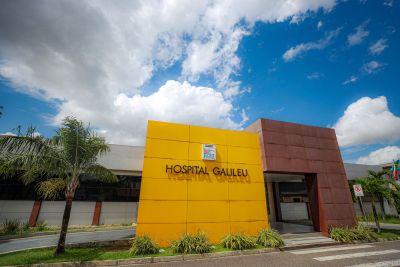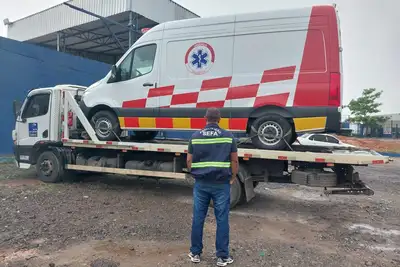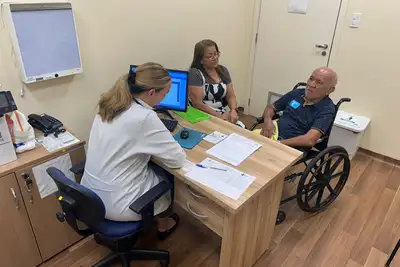Physical Therapy is an Ally in Pediatric Treatment at the Octávio Lobo Children's Oncology Hospital
Intervention helps in preserving the functionality and autonomy of patients
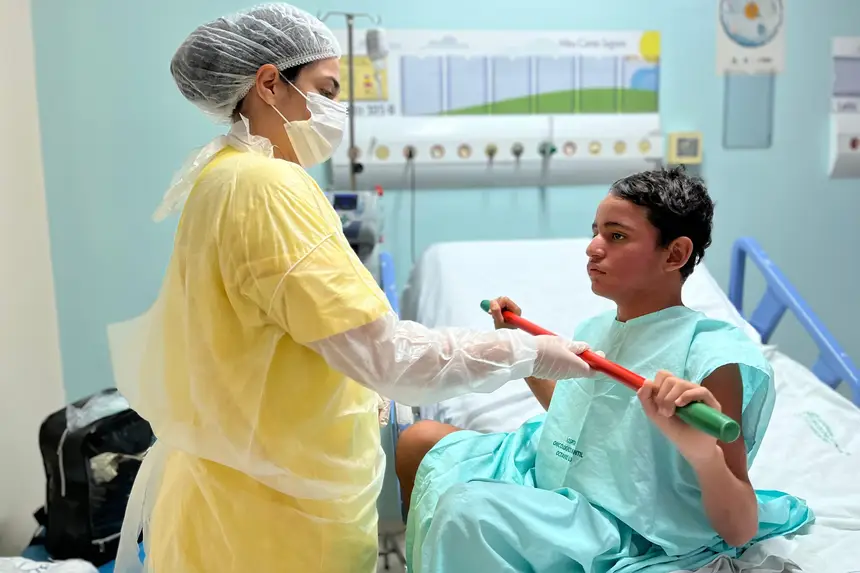
Essential during treatment, physical therapy is a fundamental ally in the recovery of children and adolescents undergoing treatment at the Octávio Lobo Children's Oncology Hospital (Hoiol). The therapeutic intervention is indicated to assist in the prevention and recovery of physical limitations, motor and respiratory complications caused by the disease itself and resulting from interventions such as surgery, chemotherapy, and radiotherapy.
From July 2022 to July this year, the High Complexity Oncology Unit (Unacon), managed by the Institute Diretrizes (ID), in partnership with the State Department of Public Health (Sespa), conducted around 100,000 appointments, including consultations and sessions, which contributed to greater autonomy and restoration of functionality for these patients. The follow-up is carried out in hospital (inpatient) and outpatient care settings.
Physical therapist Adriana Ribeiro works with hospitalized patients and emphasizes that the sessions positively impact the patient's routine by contributing to skills such as sitting, moving, and performing daily activities. “We work to prevent the loss of autonomy in those patients who spend long periods bedridden, especially the more debilitated ones. The goal is to mitigate the physical impacts caused by hospitalization, preserve muscle strength, and recover the functionality of the sick,” she stated.
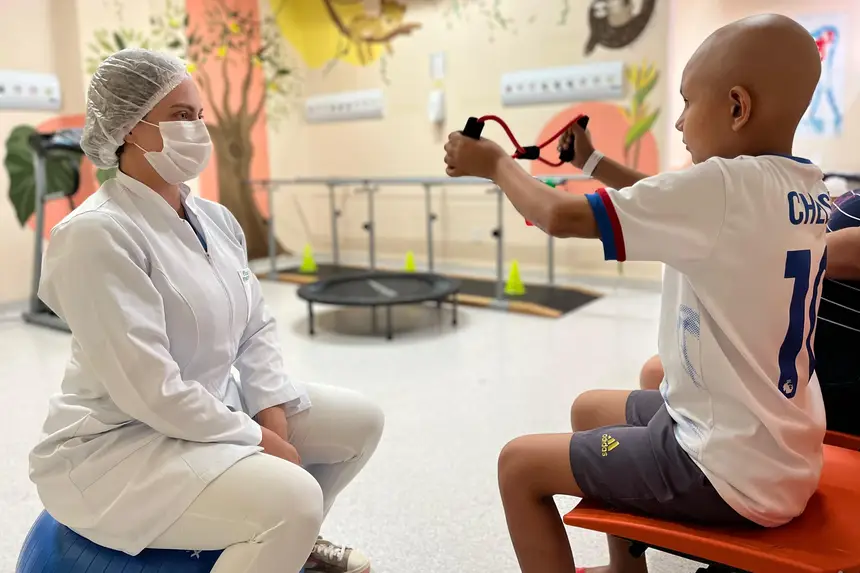
Daily visits are made to the wards to quickly identify any regression in functionality or respiratory complications. In case of abnormalities, the intervention is immediate. “We introduce respiratory and motor exercises through kinesiotherapy, among other activities developed to encourage the patient to move,” explained the physical therapist.
In more severe clinical conditions, patients are treated in the Intensive Care Unit (ICU). “In these cases, respiratory monitoring is usually intensified, with a greater focus on managing mechanical ventilation, from detailed evaluation of lung function, parameter adjustment, and weaning from this dependence. In addition to focusing on early mobilization of the patient, preventing sequelae from immobility,” Adriana highlighted.
Maria Godin reports that her son João Victor underwent two brain surgeries and, since the second procedure, when a catheter was placed to drain fluids from the organ, he did not walk due to fear. “He stayed lying down a lot, afraid that it would break. But the physical therapist gave us confidence, explained how it works, and provided the necessary support for him to be able to move,” she said.
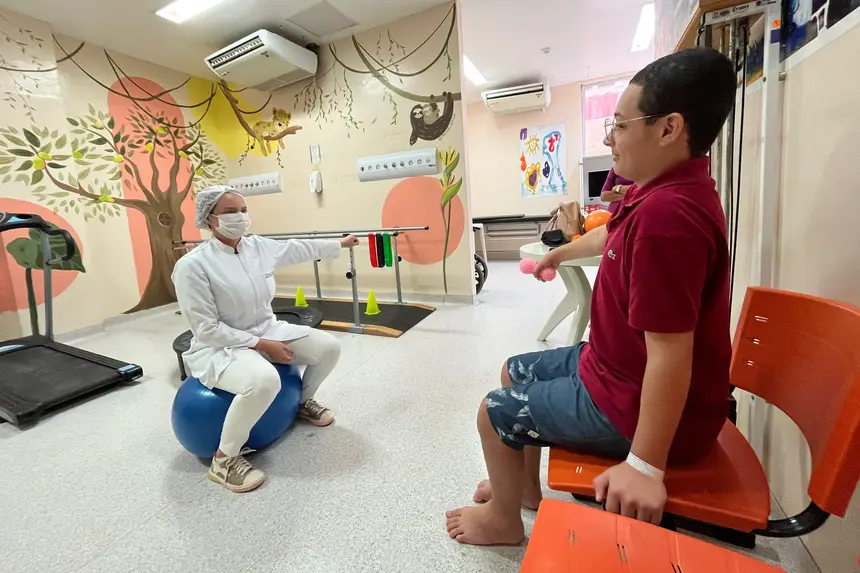
Therapeutic Resources - Hospitalized patients, whether in the ward or ICU, have access to various resources that contribute to recovery. Among the equipment are ankle weights, sticks, Swiss balls, and the cycle ergometer – a stationary exercise device that allows for cyclical rotations, similar to a bicycle, used to rehabilitate both lower and upper limbs – utilized during kinesiotherapy sessions.
In the ICU, there is a fitness space designated for patients who are able to get out of bed, where specific exercises are applied under the supervision of the physical therapy team. Additionally, technological resources such as gametherapy and virtual reality glasses help those patients who have difficulty adhering to physical therapy. Other equipment is also necessary for treatment, such as ultrasound and transcutaneous electrical nerve stimulation (TENS), which is a low-frequency current used for pain treatment.
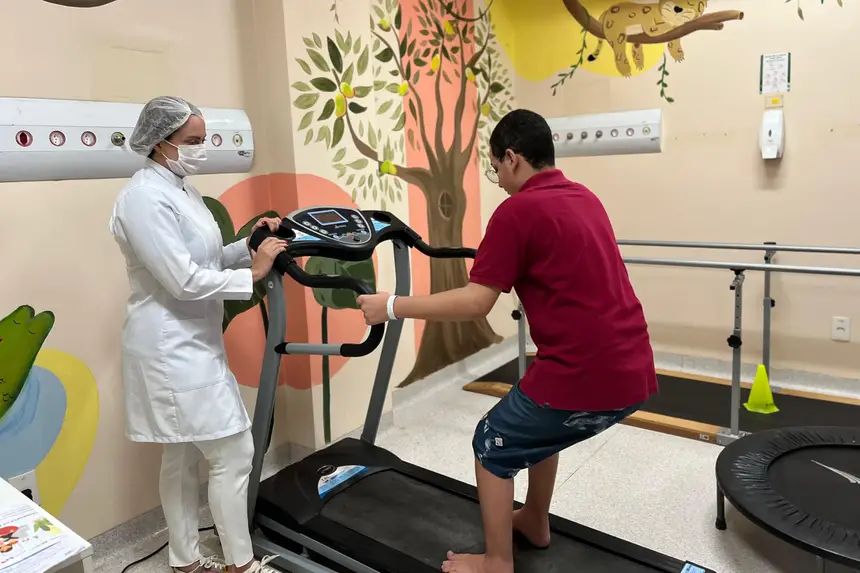
Outpatient Care - Physical therapist Paula Santos explains that the doctor responsible for the child's treatment refers them to the Physical Therapy Service. After the physiotherapeutic evaluation, treatment begins. According to her, many children arrive with complaints of pain, difficulties walking, and performing daily activities.
“Since physical therapy started working together with the chemotherapy unit, we have seen much greater participation from the children, because the caregivers today understand the importance of this care and how positively it impacts during and after treatment. With physiotherapeutic follow-up, we can reverse many of these limitations and restore the quality of life that they and their families seek when they come to us,” Paula stated.
Hairdresser Simone Araújo, 33, lives in the municipality of Jacundá with her son Pietro Faria, who is being treated for a tumor in the central nervous system. She reports that he has already undergone 19 physical therapy sessions and has shown progress. “He improved his walking and posture. If it weren't for physical therapy, his leg would still be atrophied, and he wouldn't be walking or moving. Today he no longer feels pain, only when making sudden movements,” she said.
Text by Leila Cruz / Ascom Hoiol




